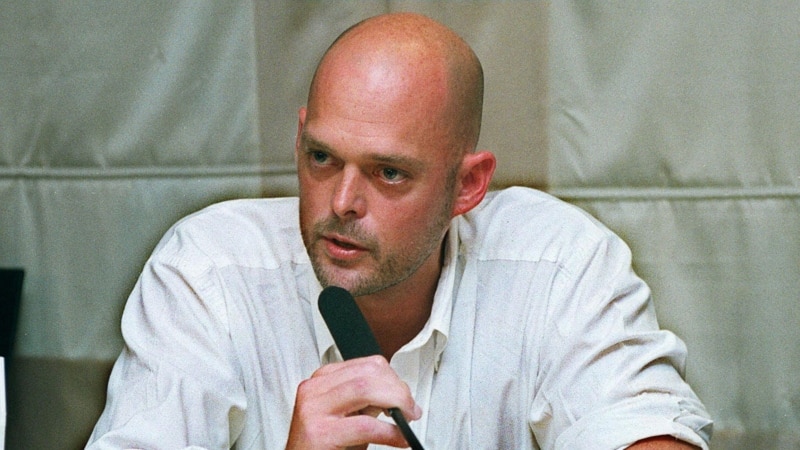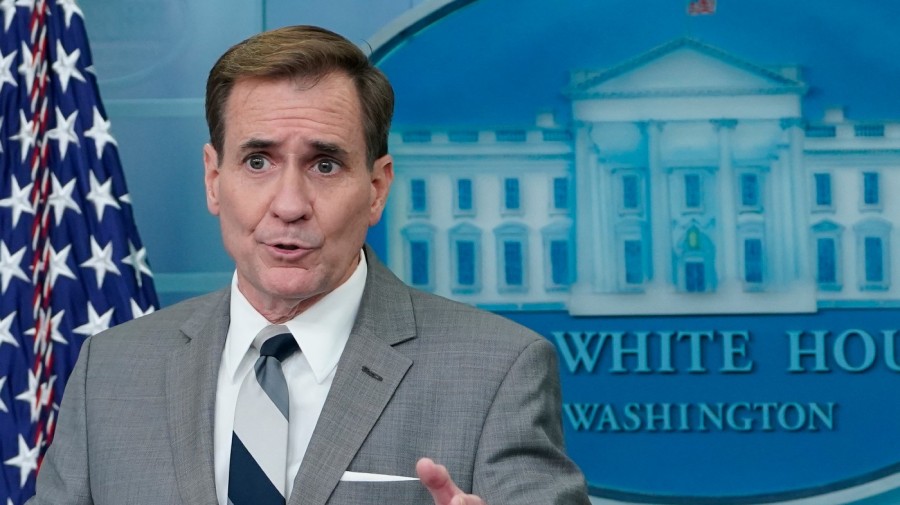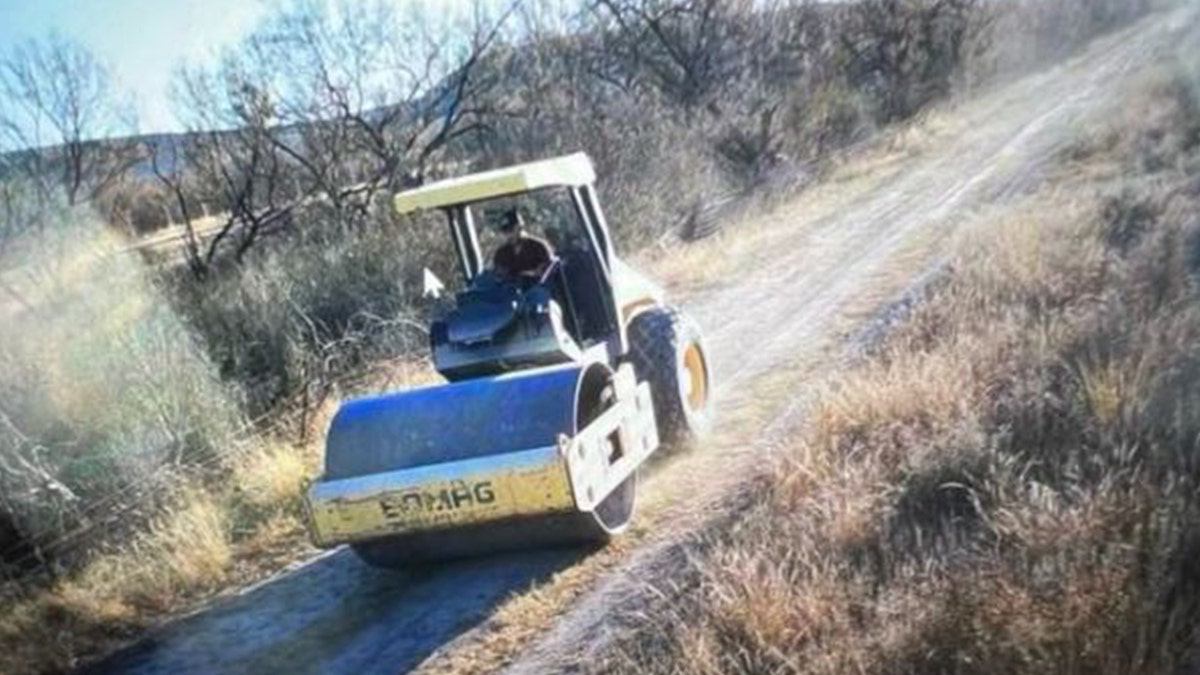Just In | The Hill
California’s snowpack — water stored in the form of snow in the Sierra Nevada — stood at 174 percent of the usual average for this time of year, according to the state Department of Water Resources (DWR).
And more precipitation is coming: Later this week California is expected to be lashed by an atmospheric river — a long, supersaturated tendril of tropical air, which through Friday will be driven by gale-force winds against the frigid air of the Sierra.
That will cause the precipitation to be squeezed out as snow and — for the second time since New Year’s Eve — statewide floods.
“The significant Sierra snowpack is good news but unfortunately these same storms are bringing flooding to parts of California,” DWR Director Karla Nemeth said in a statement.
“This is a prime example of the threat of extreme flooding during a prolonged drought as California experiences more swings between wet and dry periods brought on by our changing climate.”
While the reinvigorated snowpack — a natural water-battery whose melting waters dole out 30 percent of California’s annual water needs — is a silver lining to the coming storm, it is too early to be optimistic.
This time last year, California’s snowpack also looked strong: standing at 160 percent of average. But the spring drought whittled down that surplus until April 1, when the Sierra’s snow levels were at less than 40 percent their average levels — at a time of year they would traditionally have been at their peaks, according to The Associated Press.
“Big snow totals are always welcome, but we still have a long way to go before the critical April 1 total,” DWR’s Snow Surveys and Water Supply Forecasting Unit Manager Sean de Guzman said in a statement.
“It’s always great to be above average this early in the season, but we must be resilient and remember what happened last year. If January through March of 2023 turn out to be similar to last year, we would still end the water year in severe drought with only half of an average year’s snowpack,” de Guzman added.
Welcome to Equilibrium, a newsletter that tracks the growing global battle over the future of sustainability. I’m Saul Elbein. Send tips and feedback. A friend forward this newsletter to you?
Today we’ll look at the epic storms encircling much of the country, followed by a weakness in long-term climate modeling and how lawsuits continue targeting 3M over PFAS.
‘Brutal’ storms to lash West Coast
A “brutal system” of storms is coming for West Coast cities from San Diego to Oregon, as a strong atmospheric river dumps heavy rain and snow on hillsides and soils already saturated from flooding over the weekend, according to the National Weather Service (NWS).
“Those asking, ‘Where’s the Storm?’ It’s still coming,” the NWS Bay Area office tweeted around 10 a.m. Wednesday on the West Coast, above a satellite video of an enormous gyre covering most of the West Coast.
“The rain this morning is not the main event so to speak. Heavier rain is expected later today,” the NWS added.
Coming in cold: “Over the next 7 days, several waves of energy are set to create atmospheric river conditions in the West,” the National Weather Service tweeted on Wednesday afternoon.
The NWS predictions showed “widespread 5 [plus-inch] rain accumulations” over the next week.
“With each upcoming event, highly saturated soils create concern for flash flooding across the region,” NWS added.
Dropping bombs: The spinning storm is a “bomb cyclone” — a falling mass of cold air that will intersect with an “an exceptionally moist and relatively warm” atmospheric river moving up from the tropics, meteorologist Daniel Swain of the University of California Los Angeles wrote on Twitter.
The storm is expected to drop up to 4 inches of rain on the Bay Area and up to 6 inches on coast-facing hills, the San Francisco Chronicle reported.
Heavy rains combined with debris-flinging winds mean “it’s going to be a challenging couple of days,” Swain told the Chronicle.
Hunkering down: California cities stood under a combination of flood watches, wind advisories and evacuation orders as the storm came on.
San Francisco City officials had given out 8,500 sandbags as of Tuesday, according to The Associated Press.
While recently burned areas are most at risk, “everyone should be prepared,” Bryan La Sota of the Los Angeles County Emergency Management Department told the Los Angeles Times.
San Jose, between the two cities, warned unhoused residents living near creeks that “your life is in danger” and ordered their evacuation “immediately,” KRON reported.
Piling on: Adding to the risks of the ongoing storm are the lingering damage from the rains that lashed much of California — and particularly the San Francisco Bay — over New Year’s Eve, television station KRON reported.
The San Francisco Department of Public Works had run out of sandbags as of Wednesday morning, according to Patch.
What to do? If you’re in the storm zone, the Los Angeles Times advises that you:
Stay home under almost all circumstances.
If you must leave in an emergency, bring supplies, stay out of floodwaters and use extreme caution.
Avoid open flames and generators indoors, which can be deadly.
If your house floods, “go up, not out.”
❄️ MIDWEST, SOUTH BEAR BRUNT OF ANOTHER STORM
Another massive storm curled across the center of the U.S., dumping ice, snow and freezing rain on the Great Lakes and Plains and seeding tornadoes across the South.
Towns in a Gulf state arc from Louisiana to Georgia were under tornado and flood watches, and the National Weather Service had recorded eight tornadoes as of Tuesday night, Reuters reported.
Meanwhile, many communities in the Upper MIdwest states stood under snowfall predictions in excess of a foot, according to the National Weather Service.
One South Dakota town had nearly 2 feet as of Tuesday.
One colossal storm: “It’s all part of the same system,” NWS meteorologist Allison Santorelli told Reuters, referring to the southern and midwestern storms.
“The heavy snowfall is occurring on the west to northern side of the storm … and then the rainfall and severe weather is across the south,” she added.
Climate models have one big weakness: study
Current models of future climate change may be significantly underestimating how much warming will take place, a new study has found.
Estimates of warming into the 2100s doesn’t easily account for the danger of sudden “tipping points,” like the collapse of the Amazon rainforest or Antarctic ice sheet, according to a paper published on Tuesday in the Proceedings of the Royal Society.
Climate projections of more than a century into the future depend on computationally intensive simulations.
As a shortcut, researchers sometimes use data gleaned from shorter-term forecasts, which they then project into the future.
What’s the problem? This methodology can’t account for the risk of a sudden change to the global climate system — which could drastically shift the average climate.
Such tipping points are possible even at current levels of heating, as we reported.
By assuming that future temperatures will reflect today’s averages, scientists risk underestimating how the impacts of future global heating.
No easy way out: “To be sure of the long-term behaviour of a modern global climate model, there are no shortcuts to doing extensive simulations,” researcher Robbin Bastiaansen of the University of Utrecht said in a statement.
3M faces legal reckoning over PFAS
Chemical and materials company 3M is facing an onslaught of lawsuits over its production of forever chemicals — even as it announces that production will cease, The Wall Street Journal reported.
Per- and polyfluroalkyl substances (PFAS) are polymers commonly used as grease or water repellants in consumer goods from nonstick pans to dental floss.
They have also been linked to a wide array of health problems, from immune and fertility disorders to forms of cancer
Cutting production: 3M announced last month that it would stop producing PFAS by 2025 — although it maintained the products were safe even as it announced the halt.
“While PFAS can be safely made and used, we also see an opportunity to lead,” chief executive Michael Roman said, citing rapidly changing regulations.
The company had identified PFAS contamination in food as early as 2001, the Intercept reported.
Despite rising awareness of the risks of PFAS, “the nightmare hasn’t really stopped,” Rainer Lohmann, who studies the contaminant for the University of Rhode Island, told the Minneapolis Star Tribune.
Barrage of suits: At least three lawsuits per day have been filed against the company over its PFAS-laden products since 2020, Bloomberg Law reported last month.
There have been at least 3,500 cases mentioning PFAS filed against the company since 2015, according to Bloomberg.
The company faces billions of dollars in liability over the products it produced for itself, and as components for other companies.
Critics are skeptical: While 3M has committed to ending PFAS production, “the devil is in the details here because PFAS is such a large class of chemicals,” New Hampshire activist Andrea Amico told The Maine Monitor.
“I’m really curious as to how 3M defines PFAS and if they’re truly going to stop making all PFAS chemicals, or if it’s just a certain type of PFAS,” added Amico, whose family was exposed to the substances.
Feds: Attempted burglary behind Wash. grid attacks
An attempt to rob a retail store was behind the Christmas Day attacks on four Washington state electrical substations, according to a criminal complaint filed on Tuesday in federal court.
Two Washington men were charged in the attacks, which left more than 15,000 people without power.
Prosecutors emphasized that the attacks were part of a pattern, and put citizens across the region at risk.
The attacks cost at least $3 million in damage, according to the Justice Department.
Rising frequency: “We have seen attacks such as these increase in Western Washington and throughout the country and must treat each incident seriously,” U.S. Attorney Nick Brown said in a statement.
“The outages on Christmas left thousands in the dark and cold and put some who need power for medical devices at extreme risk,” Brown added.
Duke Energy reported six “intrusions” at Florida substations in September.
Four substations in Oregon and Washington were attacked in November.
December saw two substations in North Carolina knocked out in a “targeted attack,” according to officials.
Call for reform: Last month, the Federal Energy Regulatory Commission called on members to audit their risk of potential attacks on their physical infrastructure.
The federal government is also considering new cybersecurity rules to protect substations from remote attack, according to UtilityDive.
World Wednesday
News from around the world.
‘Maya Train’ puts jungle at risk: activists
A tourist railroad through a biosphere reserve in the jungles of the Mexican Yucatan — the so-called Maya Train — is spurring concerns that tracks will “[split] the jungle in half,” local activists told Reuters. The government has already spent $20 billion on construction, but activists and scientists warn that it has cut corners, leading to concerns of pollution and collapse in the sinkhole-prone region.
Dam ‘battery’ provides stability to renewable grid
The Portuguese grid is offsetting its intermittent renewable energy sources with an enormous, dam-based battery — a huge mountain reservoir that receives water from wind-powered pumps when energy supplies are high and releases it as hydropower when they are low, The New York Times reported. “You can’t have just solar and wind. You need something to balance,” Fabian Ronningen, an analyst at consultancy Rystad Energy told the Times.
Foxconn and Nvidia to collaborate on self-driving cars
Device maker Foxconn is teaming up with chip giant Nvidia to produce self-driving electric vehicles, The Wall Street Journal reported. The alliance will help both companies — one Taiwanese, the other American — enter the increasingly-competitive EV sector, which Foxconn dipped its tow into six months ago with its first EV battery plant in Taiwan, the Journal reported..
Please visit The Hill’s Sustainability section online for more and check out other newsletters here. We’ll see you tomorrow.
Equilibrium & Sustainability, Policy










